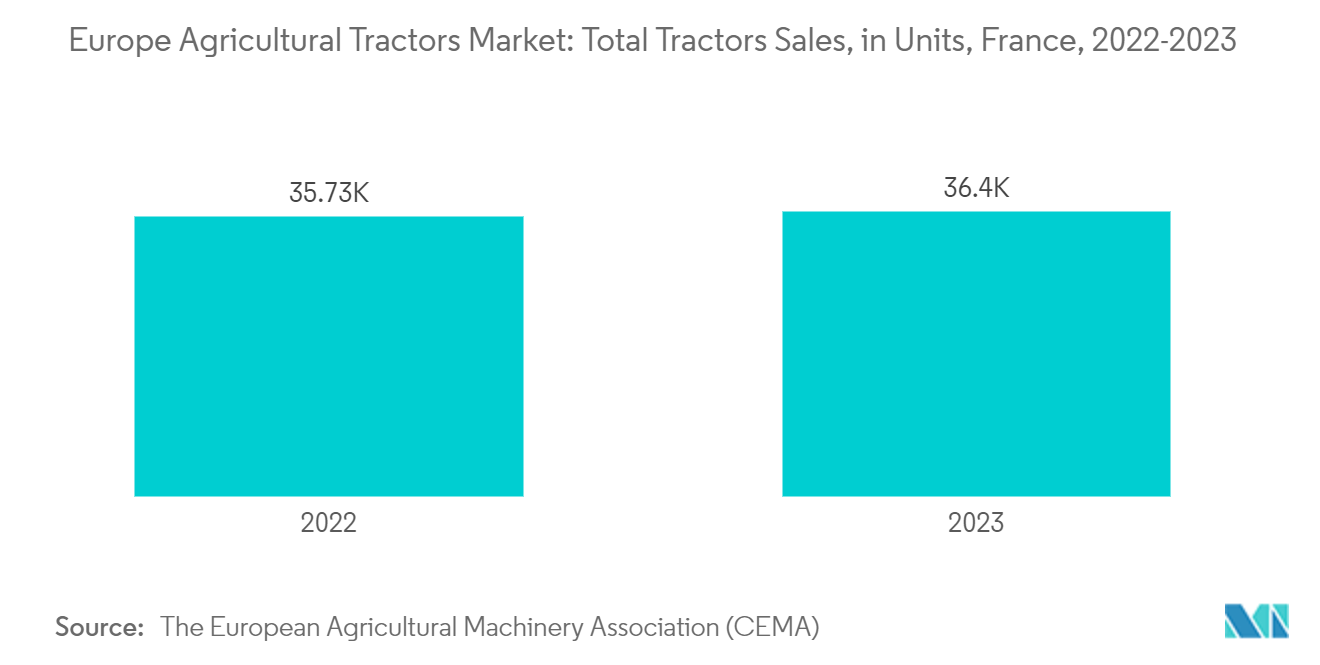Market Trends of Europe Agricultural Tractors Industry
Rising Farm Labor Costs Are Driving the Market for Tractors
Agriculture in the European Union has traditionally been labor-intensive, relying heavily on seasonal immigrant workers across the member states' farm fields. However, according to Eurostat, the European agricultural workforce steadily declined by 3.5% between 2019 and 2023, resulting in approximately 7.6 million full-time workers in the sector as of 2023. The average rate of decline in agricultural labor across the European Union was 2.6% per year.
During the same period, hourly wages for agricultural labor in the European Union increased by about 12%, reaching USD 34.4 per hour in 2023. This wage increase is partly due to the decreasing number of smaller family farms, which traditionally relied on family labor at lower costs. Additionally, significant advancements in machinery and technology have reduced the demand for manual labor, thereby intensifying the labor shortage and driving up wages for the remaining workforce.
The German Association of Agricultural Employers (GLFA) reported a substantial decline in the number of seasonal immigrant laborers in Germany during peak harvest periods in recent years. This labor shortage has led to the implementation of a pilot project, enabling German farmers to hire workers from Western Balkan countries. Consequently, rising wage rates promote farmers adopting mechanization in their operations.

France is Leading the Market
France has become a key player in the European agricultural tractors market, with its tractor production accounting for approximately 23% of the total European output in 2023. Moreover, agricultural tractor preregistrations in the country increased by about 1.8% in 2023 compared to the previous year.
Several factors have driven France's success in this market. The country's extensive agricultural lands require efficient and powerful machinery, leading to a steady demand for tractors. Additionally, France's adoption of modern farming practices has increased the need for tractors with advanced technologies like GPS guidance and precision farming tools.
France's focus on sustainability and environmental impact has also shaped the market. Farmers are increasingly looking for tractors with lower emissions, better fuel efficiency, and features that reduce their environmental footprint. This trend aligns with the country’s broader environmental goals. As France advances in modern farming methods, the demand for agricultural tractors is projected to grow during the forecast period.


